How long does the metamorphosis from monarch egg to adult butterfly take? In this guide, you’ll learn about the four stages and the five instars of the monarch life cycle. The images and descriptions will help determining the instar of each monarch caterpillar you discover.
The five stages (instars) of a Monarch butterfly take roughly 30 days. This process takes it from a freshly laid monarch egg to an adult butterfly.
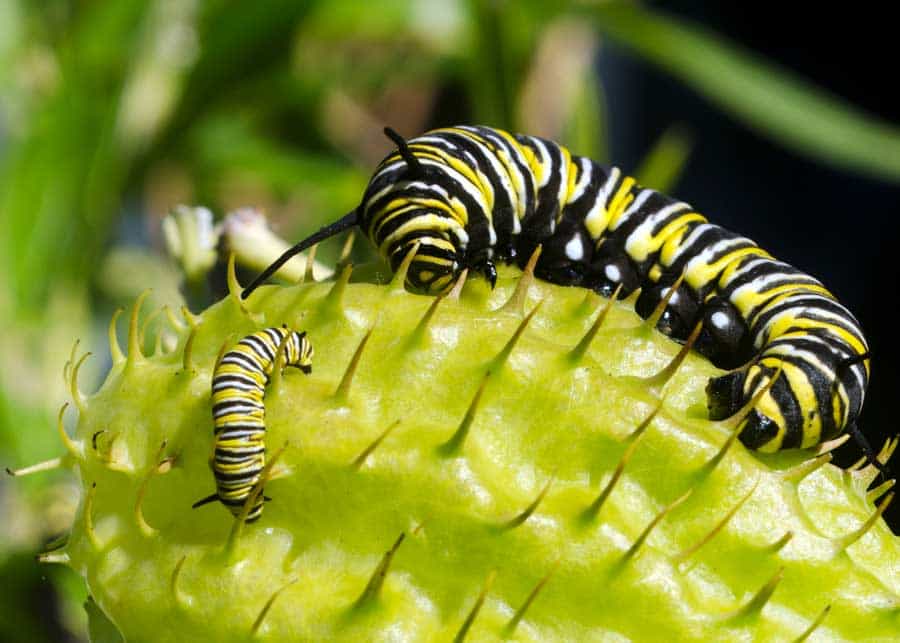
Table of Contents
4 Stages of Monarch Life Cycle
There are four stages in a monarch life cycle: egg, larva (caterpillar), pupa, and adult.
- Egg: They hatch about 3-4 days after they are laid. The female monarch lays the egg (ova; called ovipositing) on the underside of a milkweed (Asclepias) leaf.
- Larva (caterpillar): The larva stages lasts 10-14 days after hatching. There are 5 instars (molting intervals). More on these below.
- Pupa: The chrysalis stage also lasts about 10-14 days. During this pupal stage, the transformation
- Adult: Once hatching from the pupa, the monarch is now an adult butterfly. Its primary job now is to reproduce and lay eggs of the next generation.
Here’s an overview of the four stages of metamorphosis of monarch butterflies.
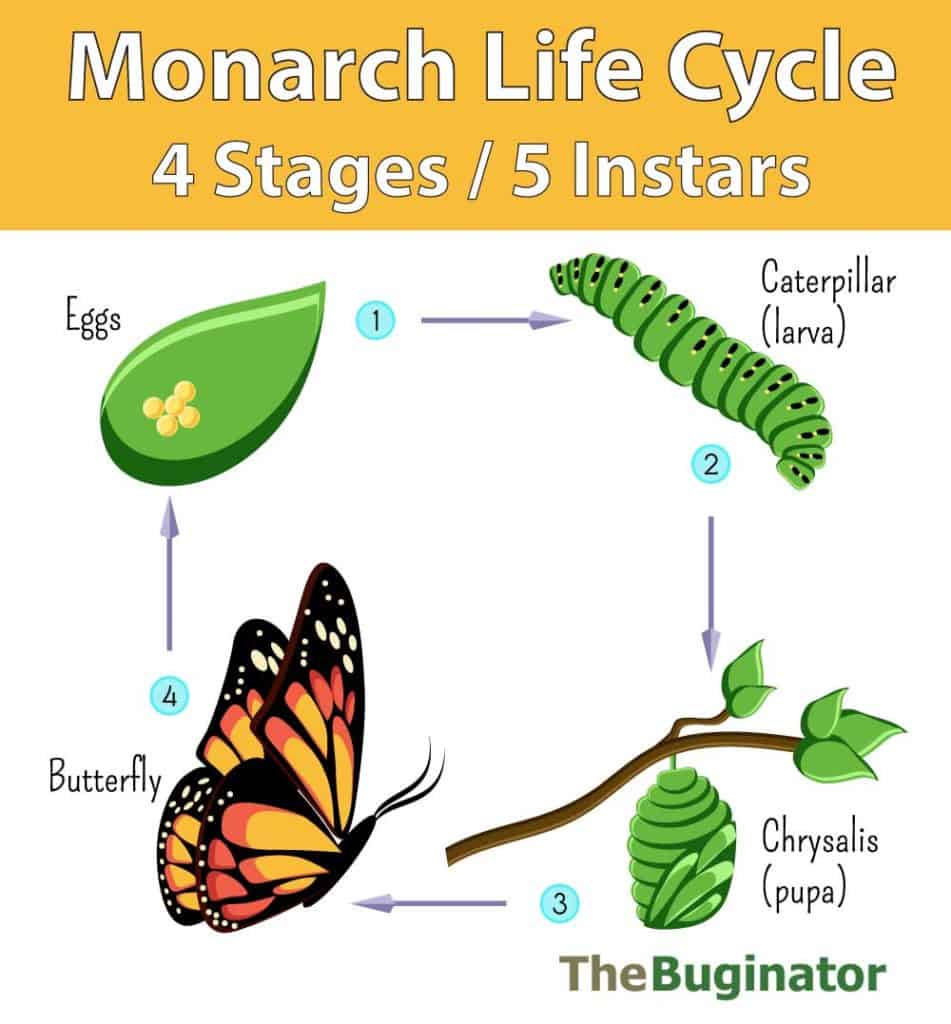
How long does monarch development take? On average, it takes about 30 days from egg to adult butterfly. But it can range from 23 to 32 days to complete the transformation.
How long is the monarch caterpillar stage? The monarch caterpillar (larvae) stage lasts from 10-14 days. During this time, the caterpillar experiences 5 instars.
Monarch Butterfly Life Cycle (Video)
This beautiful video shows the progression of the monarch’s life cycle – from egg to caterpillar to adult butterfly.
Monarch caterpillars are actually larvae.
Stage 1: Monarch Egg
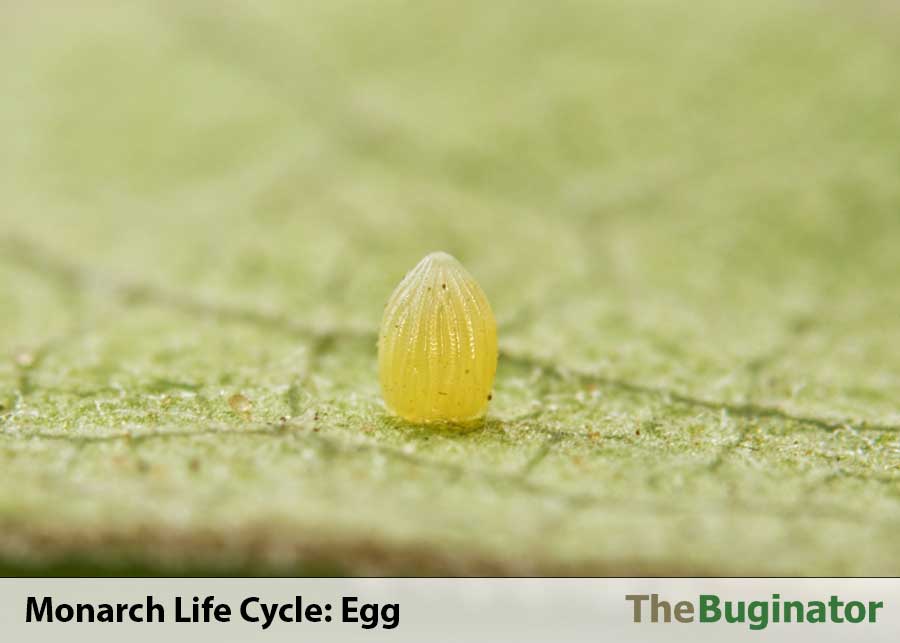
Learn more about monarch eggs and how they compare to ladybug eggs.
Stage 2: 5 Monarch Caterpiller Instars
There are five molting intervals (called instars) between the egg and the pupa stage.
Here are details and photos of the changes between each instar for the monarch caterpillar.
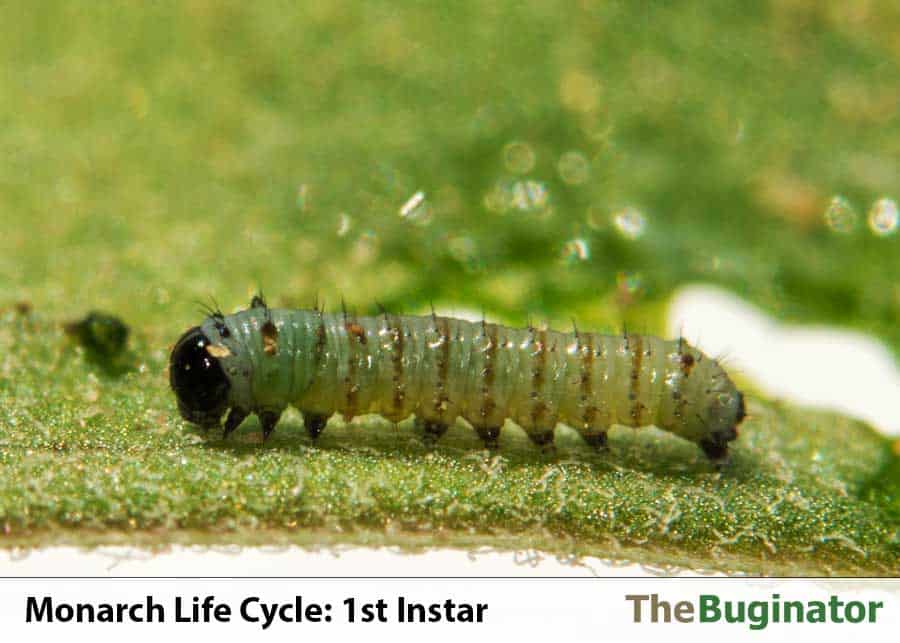
1st Instar
The monarch caterpillar (larva) hatches 3-4 days after being laid on the milkweed plant.
This is the 1st instar or stage of a butterfly’s lifecycle. After hatching, it eats its eggshell. And then it eats the leaf it was laid on.
The caterpillar is small, just 1/8″ (3.2mm), and resembles an ant. It eats a very small circular hole in the leaf.
After feeding, the caterpillar will rest and begin molting (shedding its skin).
What if it stops moving? When a caterpillar stops moving, it might look dead, but it probably isn’t. Likely the caterpillar is between instars (molting intervals) and will soon shed its skin. If you find a caterpillar that isn’t moving, it’s best to leave it alone. It is vulnerable at this stage.
Conversely, if your caterpillar is rolling around, it can be for the same reason. It can be part of the molting intervals.
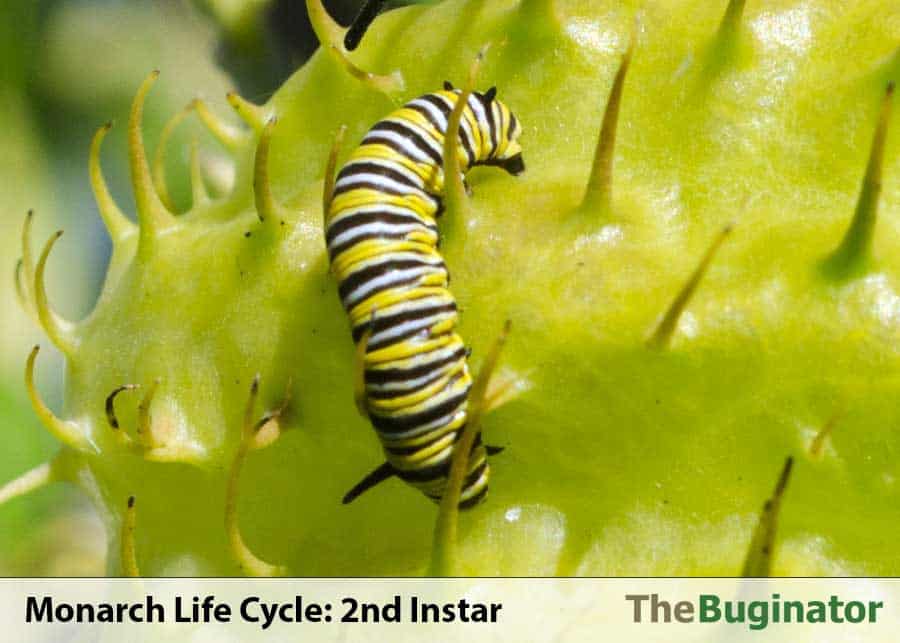
2nd Instar
2nd instar monarch caterpillars are now about 1/4″ (6.3 mm) in length. The monarch coloring is beginning to show.
Because of their still small size, they don’t have a large appetite. They might eat a leaf or two at the most.
3rd Instar
3rd instars are beginning to look different. They are noticeably larger – about 5/8″ (15.9 mm) in length and their coloring is more vibrant.
The two pairs of filaments (or tentacles) are longer.
And the front pair of legs are now closer to their head. Caterpillars have three pairs of legs, as all insects do.
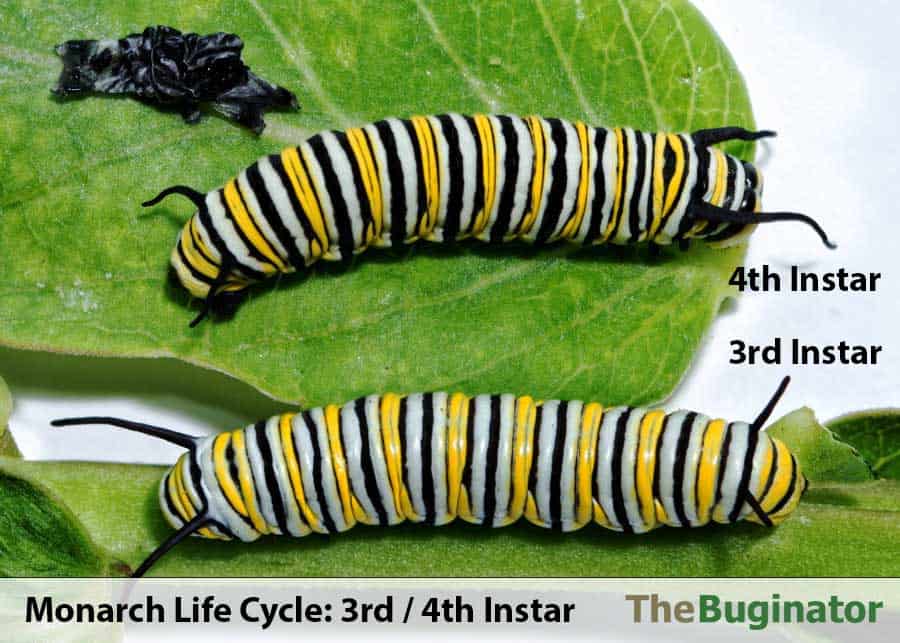
4th Instar
With the 4th instars you’ll begin to see something special.
Notice their fake legs (prolegs). They now have a small white dot on them.
The length has definitely grown and the caterpillar is now going on 1″ (25.4mm) long.
At this instar, monarch caterpillars eat a LOT! They can eat at least one leaf each, every hour.
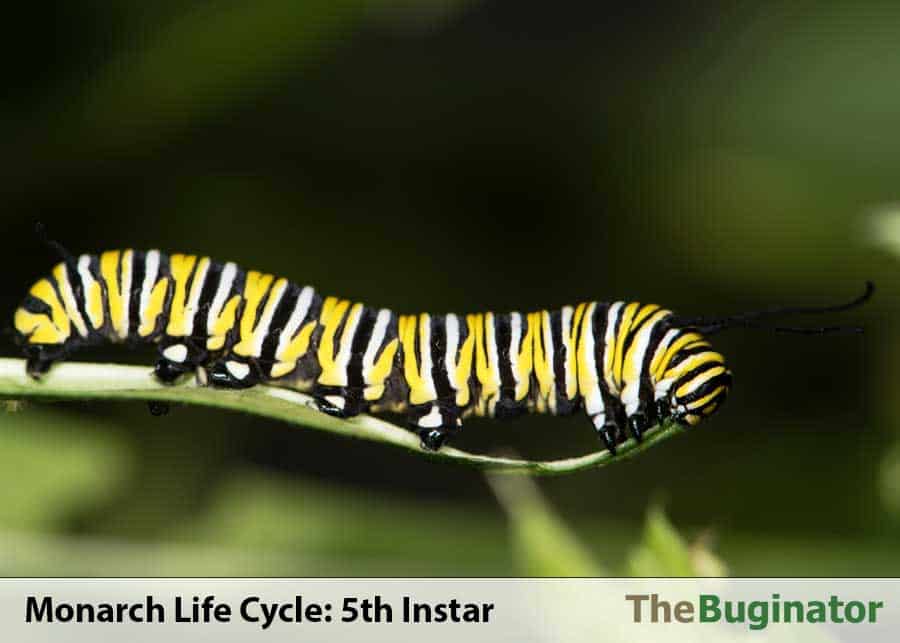
5th Instar
When the monarch larvae reach the 5th instar, it has become long and plump. They range in length from 1 to 1.77″ (25 to 45 mm).
Their black stripes look soft and velvety. Those white dots on the prolegs REALLY stand out.
When a 5th instar caterpillar eats, it bites the leaf stalk (petiole) causing the leaf to fall to the ground. If you look for “broken” leaves, You might discover a 5th instar monarch caterpillar feeding.
The 5th instar can move fast. And soon it will be looking for a place to pupate. When it finds the perfect spot, it will hang upside-down, form a ‘J,’ and molt for the last time.
You might notice a skin (appears dark or even black) after the chrysalis is formed. As with each caterpillar molting, it will also shed its skin during the chrysalis (pupa) stage.
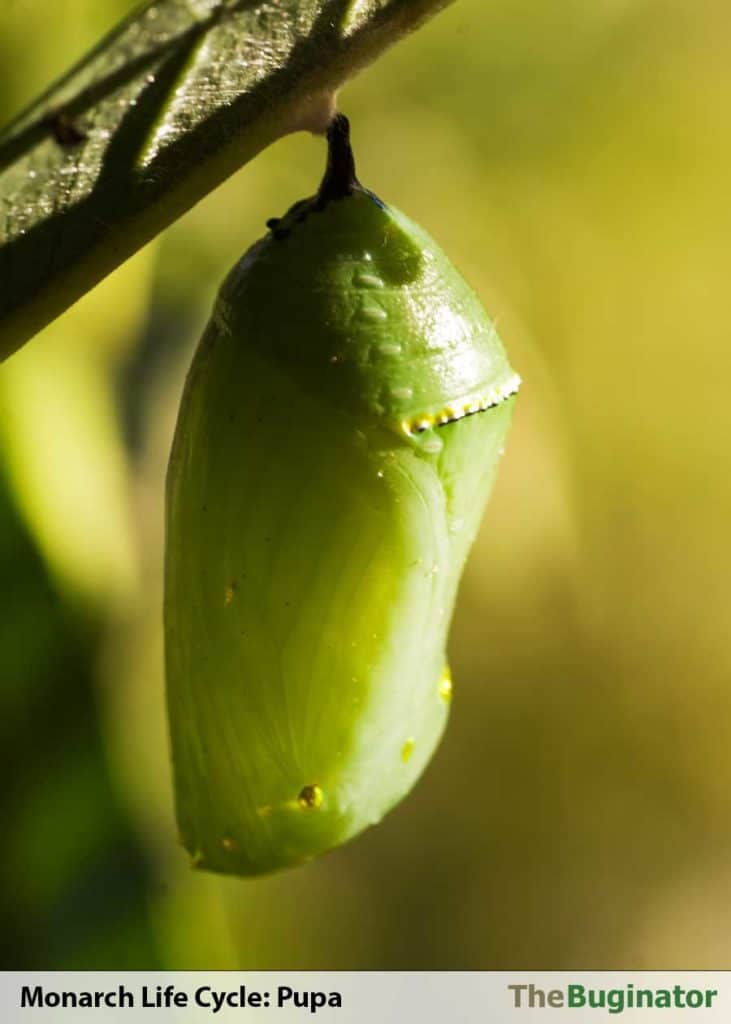
Stage 3: Pupa (Chrysalis)
The pupa (chrysalis) stage is when the caterpillar undergoes a metamorphosis – a complete change. It takes around two weeks.
During metamorphosis, many changes occur.
The monarch caterpillar is no longer a caterpillar. Over 14 days it transitions to become an adult monarch butterfly.
Did you know? The wings began to form as early as during the 3rd instar!
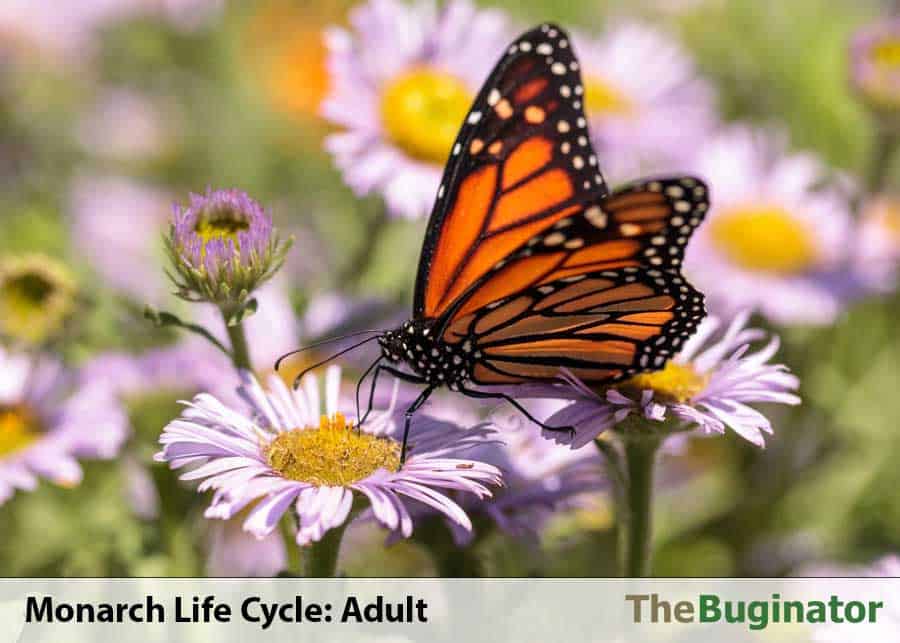
Stage 4: Adult Monarch Butterfly
After just 30 days, the tiny egg has gone through 9 changes (4 stages and 5 instars) to become a gorgeous butterfly that ecloses (emerges) from the chrysalis.
Since Monarchs are large butterflies, it takes several hours for the wings to harden.
Note: If you see red/brown liquid nearby, this is meconium. Meconium is waste material from the pupa. And it isn’t blood, although it is commonly confused for blood!
Did you know? Butterflies don’t have ‘blood’ – instead, they have hemolymph.
If you are raising monarchs at home, now is the time to release them into the wild.
This guide is part of our Monarch Butterfly Guide
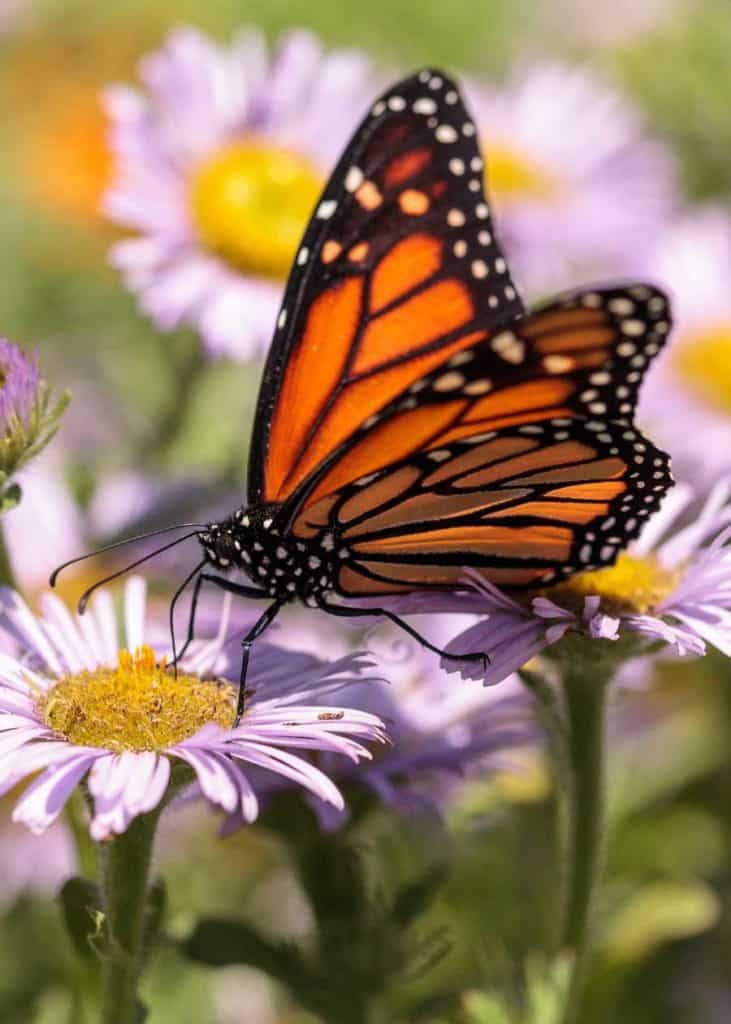
Interested to raise monarch butterflies at home? Here are the basic supplies for raising monarch butterflies. And here’s what you need to know about raising monarch caterpillars.
Monarchs live on milkweed. And so do milkweed bugs.
Your Turn
Have you seen monarch eggs, caterpillars, and butterflies at the different stages and instars? Have a fact or personal experience to share? I would love to hear your comments!
- About the Author
- Latest Posts
Dena Haines is a founder and writer at My Monarch Guide. And is working to make it the best resource for raising and enjoying monarch butterflies.
She also blogs about travel at Storyteller.Travel and photography at Storyteller Tech. Dena is a partner at Storyteller Media, a publishing company she runs with her husband, Bryan.
